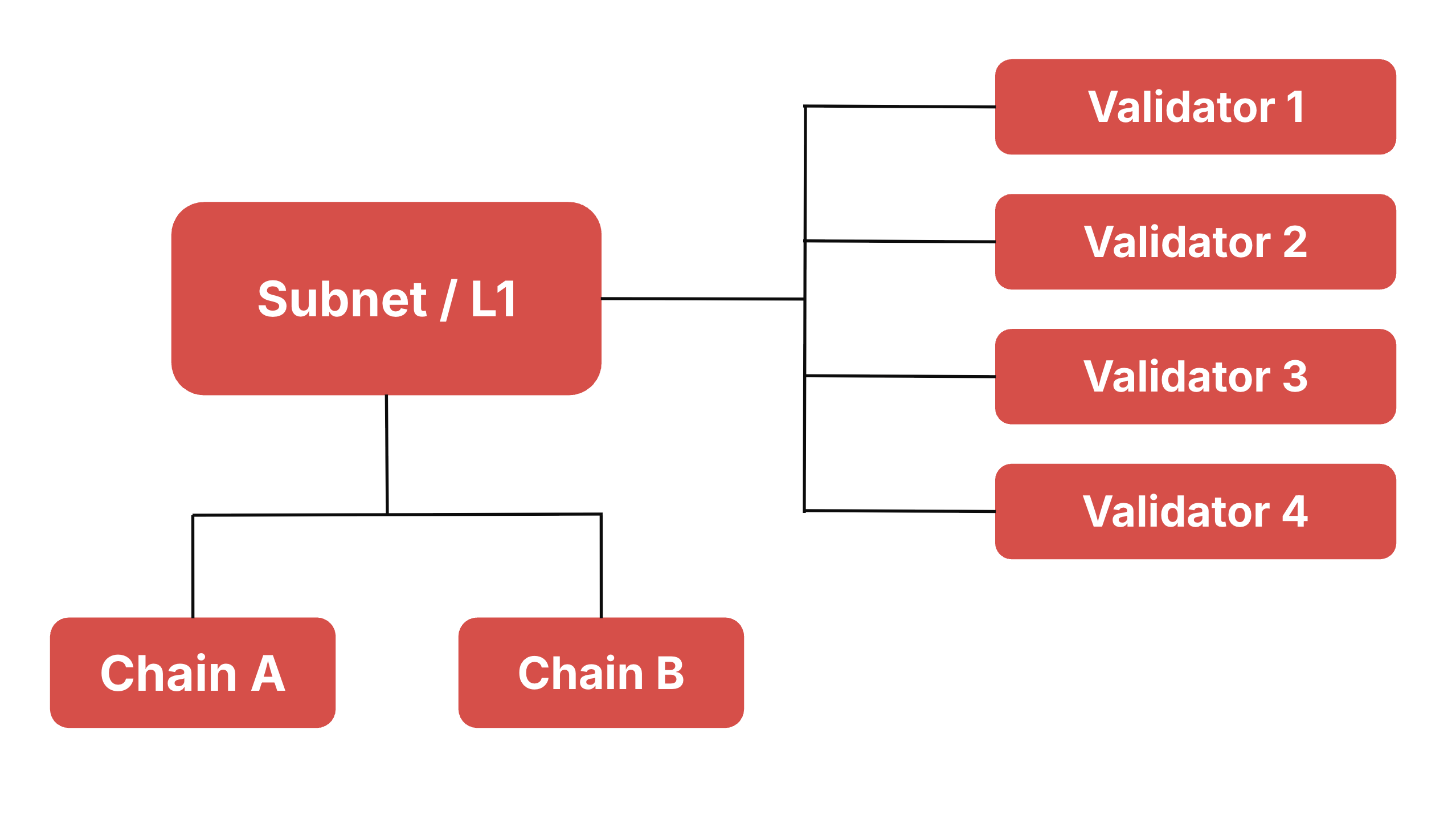P-Chain
A review of the Platform Chain.
Validators in a Multi-Chain Network
Validators are nodes of a blockchain that secure the network by validating the transactions.
Each L1 in the Avalanche network has it's own set of validators that is running the AvalancheGo client.

All validators are registered on the P-Chain with a unique node ID, public key, and stake weight, mapped to the blockchain they are validating.

Platform Chain (P-Chain)
The Platform Chain is the backbone for the native interoperability of the Avalanche network. It is a registry of all validators in the Avalanche network. This includes the validators of the Primary Network (including the X-, C- and P-Chain), as well as all L1s and legacy Subnet validators. The following graphic shows a simplified data model of the P-Chain:

Builders can create new L1 blockchains in the Avalanche Network by issuing transactions on the P-Chain. The P-Chain runs a special-purpose virtual machine called the platformvm.
It is not EVM-based and therefore to interact with it you need a compatible wallet like Core wallet.
Creating new records for L1 blockchains on the P-Chain is done by issuing transactions like the CreateSubnetTx and CreateChainTx.
The P-Chain is secured by the Primary Network validators. L1 validators are syncing the P-Chain, meaning they always have the latest view of the validator set of all blockchains in the Avalanche network, but are not participating in the consensus of the P-Chain.
Is this guide helpful?


